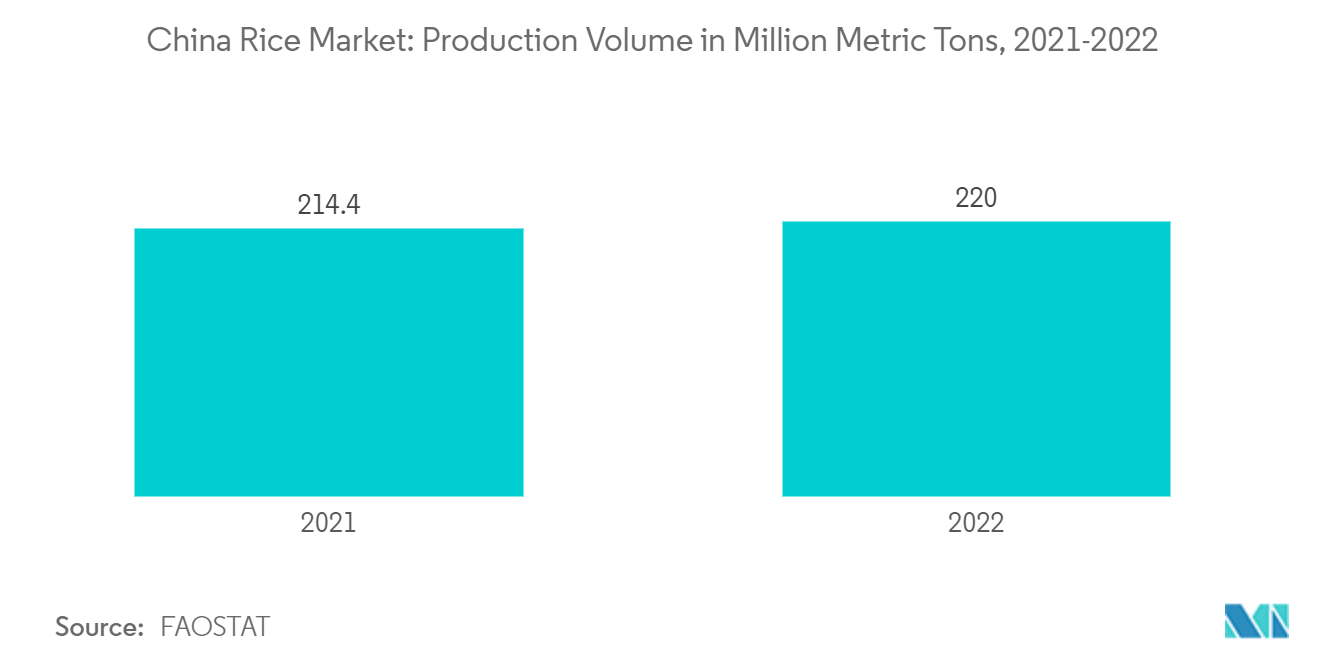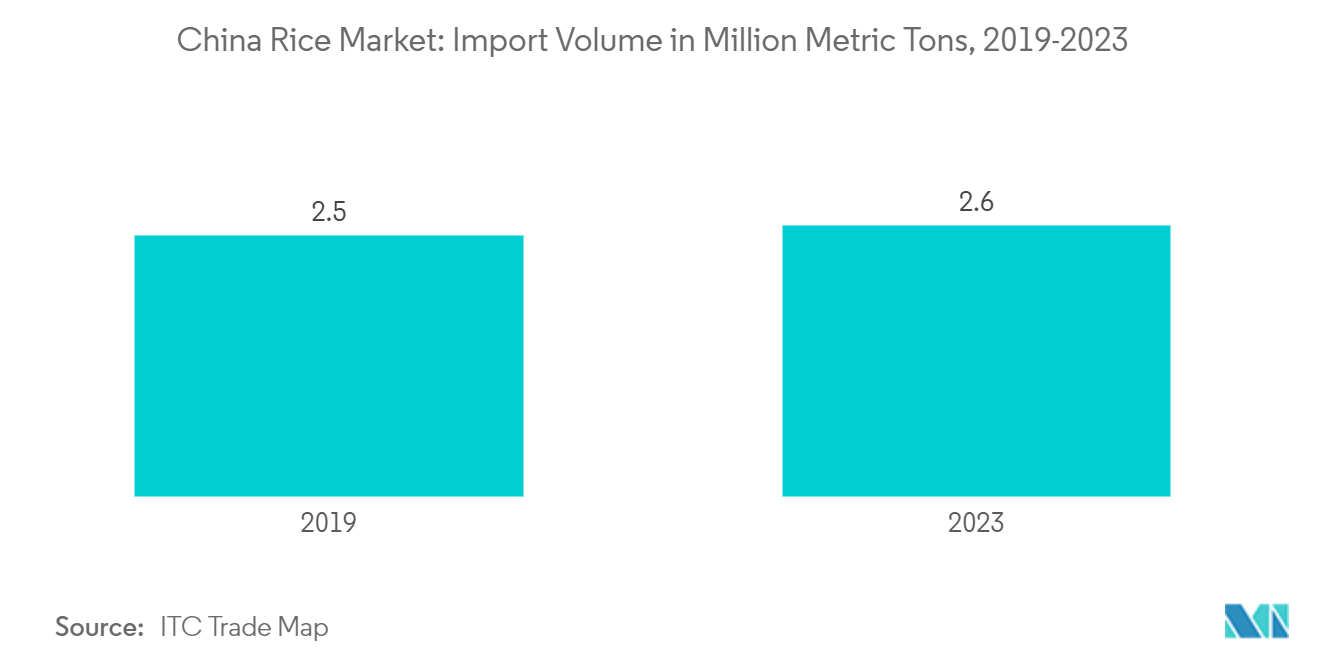Market Trends of China Rice Industry
Increased Production Potential in The Country
In recent years, China has relied heavily on imports to meet its surging rice demand. A pivotal advancement in rice cultivation came with the introduction of hybrid rice, spearheaded by the esteemed agronomist Yuan Longping. Initiated in the 1970s, this groundbreaking work aimed at developing high-yield rice varieties to amplify production. However, with the introduction of focused cultivation of rice through several studies, domestic production has increased during the study period. For instance, according to FAOSTAT, China's production of rice was 214.4 million metric tons in 2021, which increased 220.0 million metric tons in 2022.
Moreover, studies in precision agriculture have emphasized the use of technology to optimize inputs such as water, fertilizer, and pesticides. Research institutions in China have explored the use of satellite imagery, drones, and data analytics to monitor rice fields, helping farmers make informed decisions about irrigation, fertilization, and pest control. These technologies are particularly valuable in regions with limited resources, where maximizing the efficiency of each hectare is critical for boosting rice production while minimizing environmental impact.
In recent years, focused studies have shifted towards sustainability, addressing the environmental impacts of intensive rice farming. Research has highlighted the importance of reducing water usage and chemical inputs to protect ecosystems while maintaining high yields. Studies on water-saving techniques, such as Alternate Wetting and Drying (AWD), have shown that it is possible to reduce water consumption by up to 30% without sacrificing productivity. This method, tested in various regions across China, has been particularly beneficial in areas facing water scarcity that prioritize high production volumes.

Changes In Consumption Patterns Drive the Import of Rice
Changes in consumption patterns in China have played a significant role in driving the import of rice, despite the country being the world’s largest producer of the crop. While China has traditionally been largely self-sufficient in rice production, shifts in consumer preferences, lifestyle changes, and the diversification of diets have led to an increase in rice imports in recent years. According to the ITC Trade Map, China's import of rice was 2.5 million metric tons in 2019, which increased to 2.6 million metric tons in 2023. China imports rice from Vietnam, Myanmar, Thailand, and India with 36.6%, 21.2%, 16%, 10.3%, and 6.7% value share in 2023.
Besides, with the rapid expansion of China’s middle class and urbanization, there has been a shift in consumer preferences toward higher-quality rice varieties. Many Chinese consumers, especially in urban areas, nowadays prefer premium rice types, such as jasmine rice from Thailand and basmati rice from India, which are not widely grown domestically. The local varieties of rice in China, such as India and japonica, are staple foods, but the rising demand for aromatic, long-grain rice varieties from Southeast Asia has led to increased imports. These premium varieties are often perceived as more flavorful and are sought after for special occasions or in high-end restaurants.


